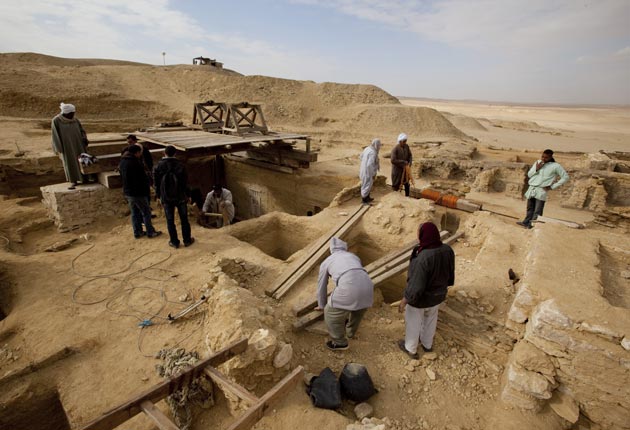Egypt uncovers father-and-son Old Kingdom tombs

Two ancient tombs, belonging to a father and son, have been discovered in Egypt. The tombs, which date to the 6th Dynasty (c2325-2150 BC), were unearthed last week in the ancient necropolis of Saqqara. At least one of the rock-hewn tombs has never been looted in antiquity, making it a potentially huge breakthrough.
The discovery was made during excavations at Gisr El-Muder, just west of the famous Step Pyramid of Djoser, the world's first pyramid. The tombs belong to government official Shendwa and his son Khonsu, according to Egyptian antiquities chief Dr Zahi Hawass.
Shendwa's tomb is a rare intact example, free from looting. Among his funerary relics were five duck-shaped offering vessels, with the bones of the ducks still inside. Other limestone jars were discovered, though Shendwa's wooden sarcophagus had succumbed to erosion.
The front of the tomb comprises a false door bearing Shendwa's various titles, one of which was 'Head of the Royal Scribes'. Decoration on the door depicts the dead seated before an offering table. Directly beneath the door is a burial shaft which runs about 20m deep, inside which stands a 30cm-tall limestone obelisk. “This obelisk is a symbol of worshipping the sun god Re,” says Dr Hawass, adding that the practice is common to the era.
Khonsu's tomb was discovered next to his father's. The team located its false door, an offering table directly opposite that door and a floor lintel decorated with 6th Dynasty symbols. The false door lists Khonsu's official titles, most of which he inherited from his father. Above it is a small coloured relief depicting Khonsu in different poses.
Saqqara, located 30km south of Cairo, is one of Egypt's largest necropolises, dubbed 'The City of the Dead'. As well as the Step Pyramid it is home to countless rock-cut tombs and mastabas, and was in use from the beginning of Egyptian civilisation to the Ptolemaic and Roman periods.
Win £1,000 in travel with Addison Lee: Find the driver in Virtual Egypt
Join our commenting forum
Join thought-provoking conversations, follow other Independent readers and see their replies
Comments
Bookmark popover
Removed from bookmarks